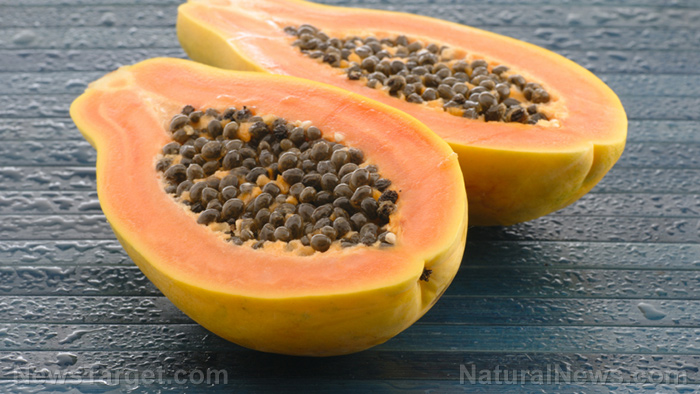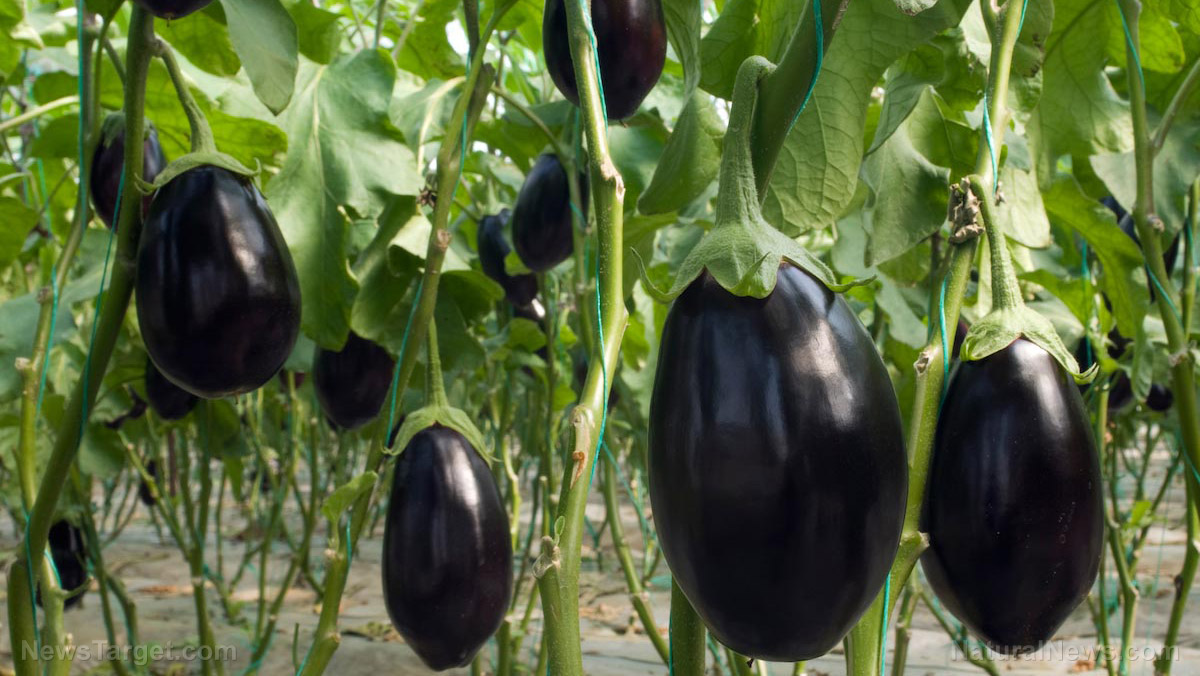 Parler
Parler Gab
Gab
- Papaya is a tropical fruit celebrated for its sweet flavor, vibrant color and impressive nutrient profile.
- Papaya is oblong-shaped, with skin that turns yellow or orange when ripe and flesh that ranges from orange to pink.
- It originated in Central America, particularly southern Mexico, and was cultivated by ancient civilizations like the Maya and Aztecs. It was later spread globally by European colonizers and is now grown in tropical regions worldwide.
- Papaya is rich in essential nutrients, including vitamins A and C, folate, potassium and magnesium. It also contains enzymes like papain and chymopapain that aid digestion and have anti-inflammatory effects.
- Papaya can be used in both sweet and savory dishes. Popular recipes include papaya salsa, green papaya salad and tropical smoothie bowls.
Papaya: A closer look
Papaya is easily recognizable by its oblong shape, which can range from pear-like to cylindrical, depending on the variety. When ripe, its skin transitions from green to a sunny yellow or orange hue, while its inner flesh glows with a vibrant orange or pinkish color. The fruit’s taste is a delightful blend of sweetness and mild muskiness, often compared to a cross between a cantaloupe and a mango. Embedded within the flesh are small, black, gelatinous seeds, which, though edible, are often discarded due to their peppery, slightly bitter flavor.Historical and cultural significance
Papaya is believed to have originated in the tropical regions of Central America, particularly southern Mexico and neighboring countries. Historical records suggest that the fruit was cultivated by the Maya and Aztec civilizations long before European explorers arrived in the Americas. Spanish and Portuguese colonizers introduced papaya to other parts of the world, including the Caribbean, Southeast Asia and Africa, where it thrived in warm, humid climates. Today, papaya is grown in tropical and subtropical regions worldwide, with India, Brazil, Mexico and Indonesia being among the largest producers.Nutritional composition and phytonutrients
Papaya’s health benefits stem from its rich array of vitamins, minerals and phytonutrients.
It is an excellent source of vitamin C, providing more than 100 percent of the recommended daily intake in a single serving.
The fruit also contains significant amounts of vitamin A, folate, potassium and magnesium.
Among its phytonutrients are carotenoids like beta-carotene, lycopene and lutein, which are known for their antioxidant properties.
Papaya also contains enzymes such as papain and chymopapain, which aid in digestion and have anti-inflammatory effects. (Related: Festive flavors: The sweet history, nutritional profile and health benefits of pecan pie.)
Health benefits and potential therapeutic uses
Papaya’s nutrient-dense profile makes it a formidable ally in combating various health conditions. Here are some of the ways papaya can benefit your health:- Supports optimal immune health – Its vitamin C content boosts the immune system, making it a valuable addition to your diet during cold and flu season.
- Supports skin health – Vitamins A and C in papaya can support collagen production, promoting skin elasticity and reducing signs of aging. Papaya extract is also used to treat wounds, burns and skin infections because of its antimicrobial properties.
- Has anti-inflammatory properties – For people with inflammatory conditions such as arthritis, papaya’s anti-inflammatory properties can help alleviate pain and swelling.
- Helps protect against cancer – Its high antioxidant content helps neutralize free radicals, reducing oxidative stress and lowering the risk of chronic diseases such as heart disease and cancer. Papaya’s lycopene content has also been linked to a reduced risk of prostate cancer.
- Can boost digestive health – The digestive enzymes in papaya, especially papain, make it an effective remedy for digestive disorders like bloating, constipation and irritable bowel syndrome (IBS). The fruit’s fiber content further supports gut health by promoting regular bowel movements and feeding beneficial gut bacteria.
Culinary applications and recipe ideas
Papaya’s versatility makes it a star ingredient in both sweet and savory dishes. Below are some recipe ideas to incorporate this superfood into your diet:- Papaya salsa – Combine diced papaya, red onion, jalapeno, cilantro and lime juice for a refreshing salsa that pairs perfectly with grilled fish or chicken.
- Green papaya salad – A staple in Southeast Asian cuisine, this salad features shredded unripe papaya, carrots, peanuts and a tangy dressing made with fish sauce, lime and chili.
- Papaya and avocado salad – Toss ripe papaya chunks with avocado, arugula and a honey-lime vinaigrette for a light and nutritious salad.
- Tropical papaya smoothie bowl – Blend ripe papaya with banana, coconut milk and a splash of lime juice, then top with granola, chia seeds and fresh berries.
- Papaya chia pudding – Mix pureed papaya with coconut milk and chia seeds, then refrigerate overnight for a creamy, nutrient-packed dessert.
More related stories:
The star of wellness: Exploring the nutritional power of carambola (starfruit). Strategies to combat oxidative stress from fires and pollution. Essential oils to create a cozy and relaxing winter atmosphere. Sources include: Brighteon.AI NaturalNews.com Brighteon.comTrump administration declares war on Mexican drug cartels, designates them as foreign terrorists
By Finn Heartley // Share
RFK Jr. pledges unbiased investigation into chronic disease causes, including vaccines
By Willow Tohi // Share
“11 Ways to Detoxify Your Mind and Body”: A roadmap to enhance overall well-being
By Arsenio Toledo // Share
Thieves oil: A centuries-old remedy with modern day relevance
By Lance D Johnson // Share
The majesty of the eggplant: A nutritional powerhouse with ancient roots
By Zoey Sky // Share
Crypto advocate challenges UK tax system to stop funding war crimes
By finnheartley // Share
Trump administration declares war on Mexican drug cartels, designates them as foreign terrorists
By finnheartley // Share
Denmark announces massive military REARMAMENT after wasting $Billions in Ukraine
By ljdevon // Share










